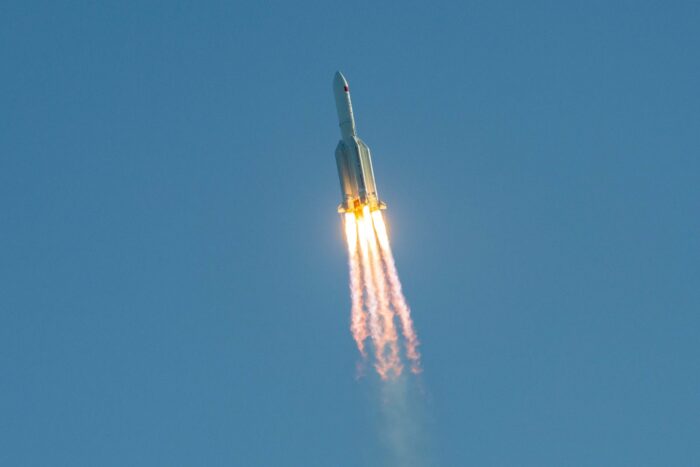Breaking News
China Sends Crew and Lab Rats to Tiangong Space Station in Latest Mission
China sends three astronauts — including its youngest ever — and four lab rats to the Tiangong space station aboard Shenzhou-21, marking a new milestone in its ambitious lunar and space exploration plans.

China has launched three astronauts — including its youngest ever — and four lab rats aboard the Shenzhou-21 spacecraft, which successfully docked with the Tiangong Space Station early Saturday.
According to Xinhua News Agency, the spacecraft docked at 3:35 a.m. (1935 GMT Friday), nearly four hours after lifting off from the Jiuquan Satellite Launch Center in northwest China aboard a Long March-2F rocket.
The Tiangong space station, which hosts rotating crews of three astronauts every six months, is considered the flagship of China’s ambitious space programme, reflecting the country’s multibillion-dollar investment to rival the United States and Russia in space exploration.
China has also announced plans to send astronauts to the Moon by 2030 and eventually establish a permanent lunar base.
Commanding the new mission is Zhang Lu, a veteran astronaut, accompanied by Wu Fei, a 32-year-old flight engineer and China’s youngest astronaut to go into space, and Zhang Hongzhang, 39, a payload specialist.
The crew waved farewell to colleagues and relatives at the Gobi Desert launch site, with a military band performing a patriotic song.
“We are confident we’ll report back to our motherland and its people with complete success,” said mission commander Zhang Lu before liftoff.
Wu, embarking on his first space flight, described himself as feeling “incomparably lucky.”
Joining the astronauts are four mice — two male and two female — marking China’s first in-orbit experiments involving rodents.
Pursuing the “Space Dream”
China’s space programme — the third in history to send humans into orbit after the U.S. and the former Soviet Union — has accelerated under President Xi Jinping’s “space dream” initiative.
The country made history in 2019 when its Chang’e-4 probe became the first spacecraft to land on the far side of the Moon, followed by a Mars rover landing in 2021.
On Thursday, the China Manned Space Agency (CMSA) outlined upcoming “crucial tests” to prepare for its 2030 crewed lunar mission.
During their stay, the Shenzhou-21 astronauts will conduct spacewalks, install anti-debris shields on Tiangong’s exterior, and carry out scientific experiments and educational outreach to inspire future generations of space scientists.
China, which has been excluded from the International Space Station since 2011 due to a U.S. ban on NASA collaboration, has sought international partnerships for its own space programme.
Earlier this year, Beijing signed an agreement with Pakistan to train and recruit the first foreign “taikonauts” to join future missions.
Opinion Nigeria News









